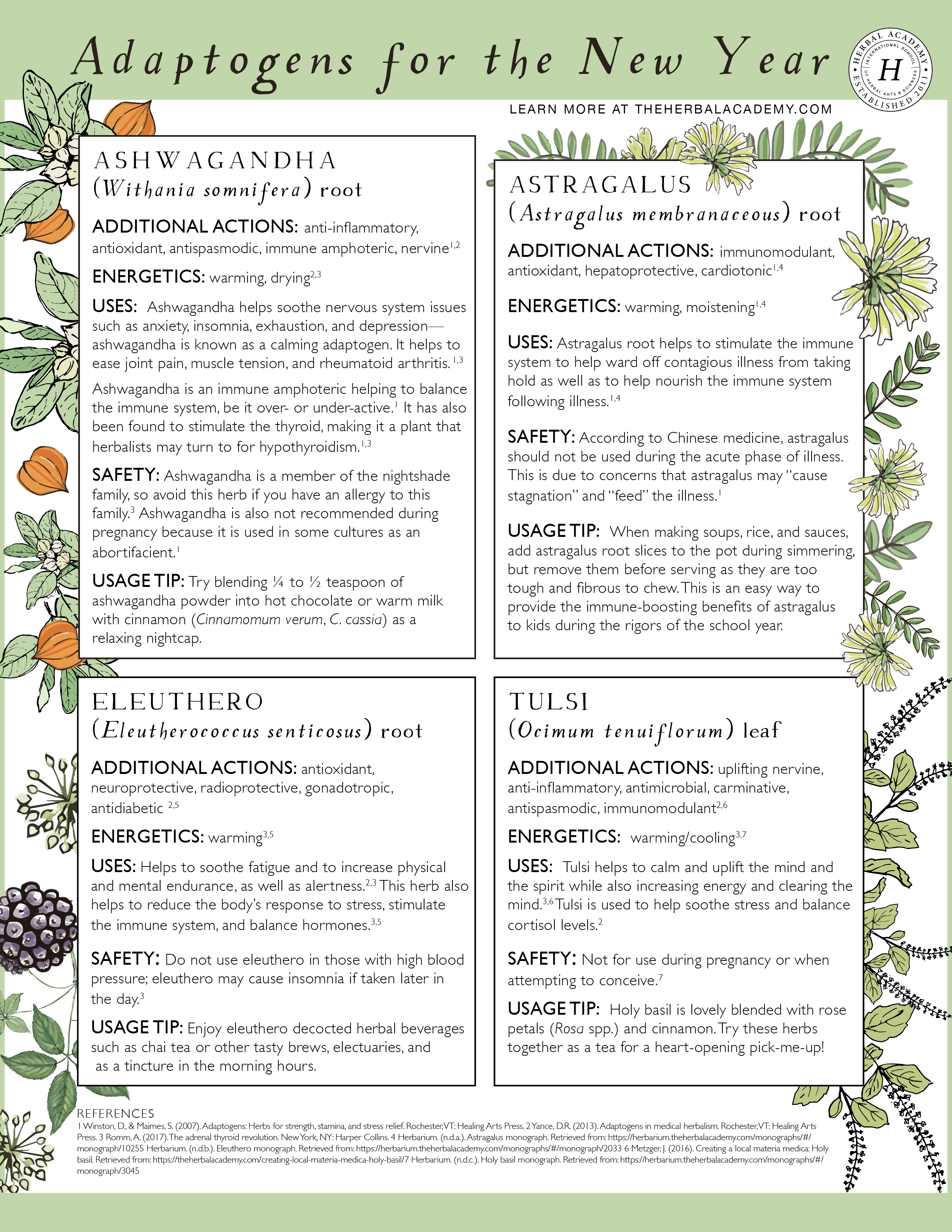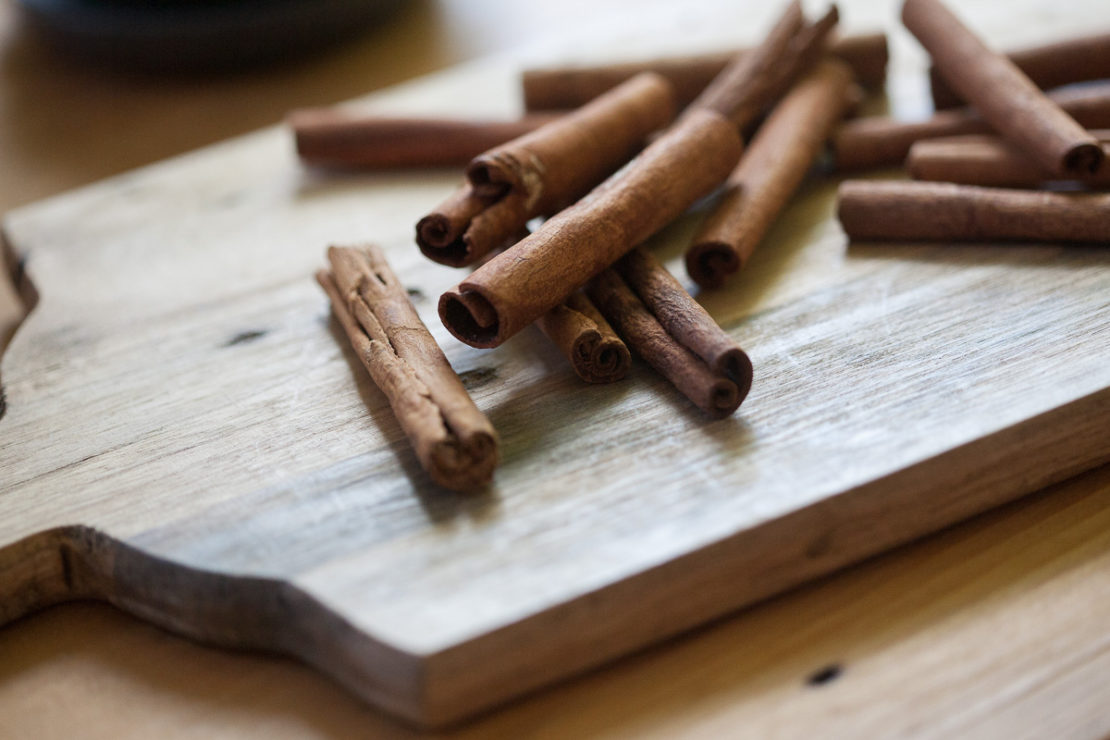
How to Ring in the New Year with Herbs
Happy New Year! As we say goodbye to another decade, many of us have our eyes lifted toward the future with dreams of vitality and peace. As herbalists, we are always looking to live our lives from a holistic perspective, and we are excited to celebrate and embrace wellness during the new year with herbs as part of a holistic paradigm.
Herbs can help to provide us with so much, and these amazing plants are a joy to bring into everyday life! From nourishing food-like herbs like nettle and alfalfa, which are richly filled with vitamins and minerals, to herbal allies that are there for us when we need more specific support, there are many herbs to turn to.
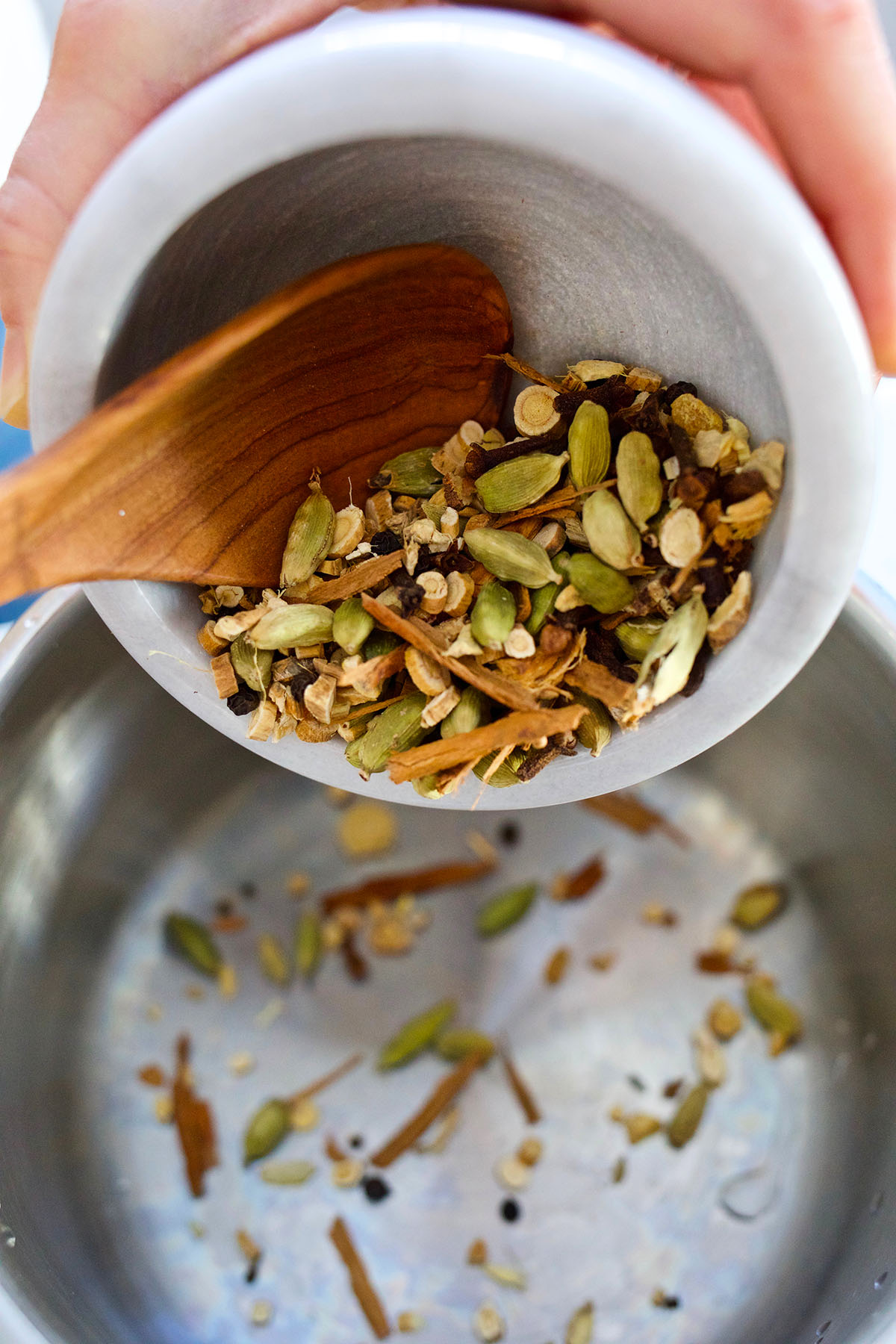
Adaptogens for the New Year
To start off the new year with herbs, we are focusing on adaptogens. You may be asking, “What is an adaptogen?” As herbalists David Winston and Steven Maimes describe in their book, Adaptogens, Herbs for Strength, Stamina, and Stress Relief:
“Adaptogens are remarkable natural substances that help the body adapt to stress, support normal metabolic functions, and help restore balance. They increase the body’s resistance to physical, biological, emotional and environmental stressors… They are unique from other substances in their ability to restore the balance of endocrine hormones, modulate the immune system, and allow the body to maintain homeostasis” (Winston & Maimes, 2007, pg. 17).
While the use of adaptogens is not a substitute for living a holistically balanced life with attention to diet, sleep, exercise, and time for joy, these herbs can help to set a firm, nourished foundation from which to engage in the world.
Here are four adaptogens to explore from this illustrious group!
Ashwagandha (Withania somnifera) root
Additional Actions: anti-inflammatory, antioxidant, antispasmodic, immune amphoteric, nervine (Winston & Maimes, 2007; Yance, 2013)
Energetics: warming, drying (Romm, 2017; Yance, 2013)
Uses: Ashwagandha helps soothe nervous system issues such as anxiety, insomnia, exhaustion, and depression—ashwagandha is known as a calming adaptogen. It helps to ease joint pain, muscle tension, and rheumatoid arthritis (Romm, 2017; Winston & Maimes, 2017).
Ashwagandha is an immune amphoteric helping to balance the immune system be it over- or under-active (Winston & Maimes, 2017). It has also been found to stimulate the thyroid, making it a plant that herbalists may turn to for hypothyroidism (Romm, 2017; Winston & Maimes, 2017).
Safety: Ashwagandha is a member of the nightshade family, so avoid this herb if you have an allergy to this family (Romm, 2017). Ashwagandha is also not recommended during pregnancy because it is used in some cultures as an abortifacient (Winston & Maimes, 2017).
Usage Tip: Try blending ¼ to ½ teaspoon of ashwagandha powder into hot chocolate or warm milk with cinnamon (Cinnamomum verum, C. cassia) as a relaxing nightcap. Read more about ashwagandha here: https://theherbalacademy.com/beginners-guide-ashwagandha/
Astragalus (Astragalus membranaceous) root
Additional Actions: immunomodulant, antioxidant, hepatoprotective, cardiotonic (Herbarium, n.d.a, Winston & Maimes, 2007)
Energetics: warming, moistening (Herbarium, n.d.a, Winston & Maimes, 2007)
Uses: Astragalus root helps to stimulate the immune system to help ward off contagious illness from taking hold as well as to help nourish the immune system following illness (Winston & Maimes, 2007; Herbarium, n.d.a).
Safety: According to Chinese medicine, astragalus should not be used during the acute phase of illness. This is due to concerns that astragalus may “ cause stagnation and “feed” the illness. (Winston & Maimes, 2007).
Usage Tip: When making soups, rice, and sauces, add astragalus root slices to the pot during simmering, but remove them before serving as they are too tough and fibrous to chew. This is an easy way to provide the immune-boosting benefits of astragalus to kids during the rigors of the school year.
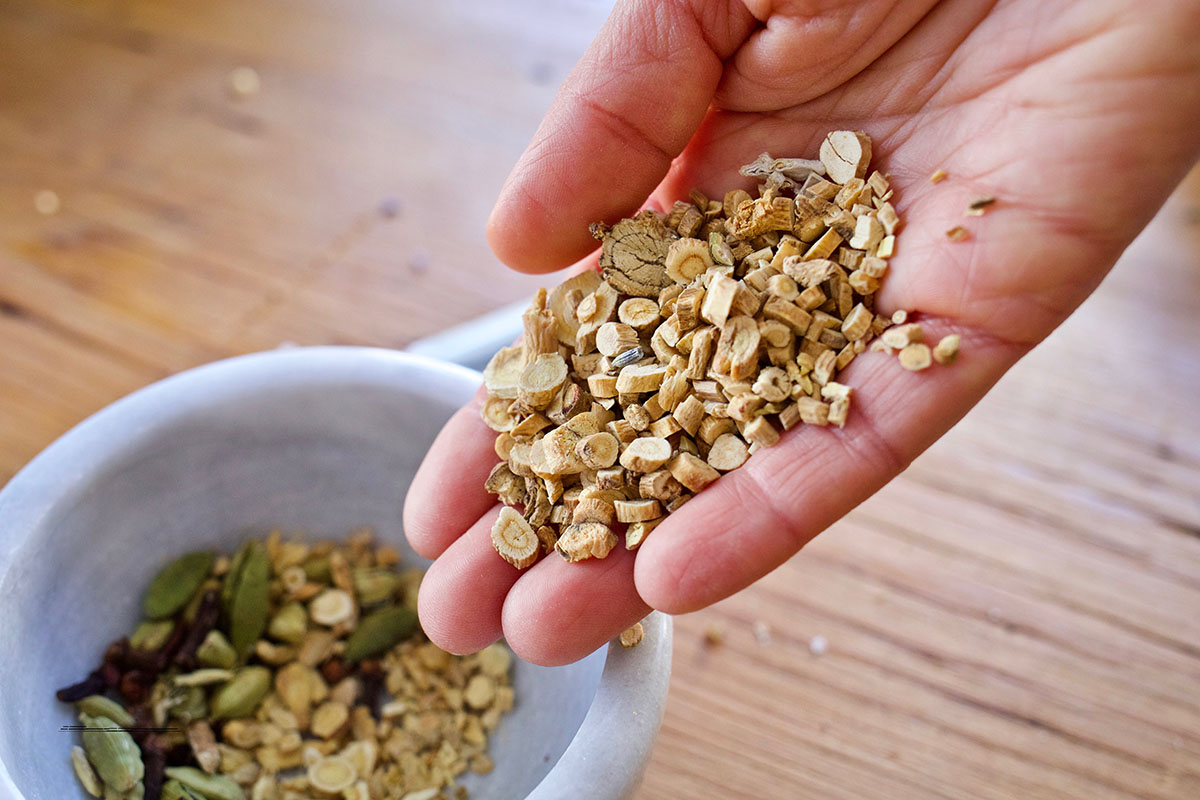
Eleuthero (Eleutherococcus senticosus) root
Additional Actions: antioxidant, neuroprotective, radioprotective, gonadotropic, antidiabetic (Herbarium, n.d.b.; Yance, 2013)
Energetics: warming (Herbarium, n.d.b.; Romm, 2017)
Uses: Helps to soothe fatigue and to increase physical and mental endurance, as well as alertness (Romm, 2017; Yance, 2013). This herb also helps to reduce the body’s response to stress, stimulate the immune system, and balance hormones (Herbarium, n.d.b.; Romm, 2017).
Safety: Do not use eleuthero in those with high blood pressure; eleuthero may cause insomnia if taken later in the day (Romm, 2017).
Usage Tip: Enjoy eleuthero decocted herbal beverages such as chai tea or other tasty brews, electuaries, and as a tincture in the morning hours.
Tulsi (Ocimum tenuiflorum) leaf
Additional actions: uplifting nervine, anti-inflammatory, antimicrobial, carminative, antispasmodic, immunomodulant (Metzger, 2016; Yance, 2013)
Energetics: warming/cooling (Romm, 2017; Herbarium, n.d.c.)
Uses: Tulsi helps to calm and uplift the mind and the spirit while also increasing energy and clearing the mind (Metzger, 2016; Romm, 2017). Tulsi is used to help soothe stress and balance cortisol levels (Yance, 2013).
Safety: Not for use during pregnancy or when attempting to conceive (Herbarium, n.d.c.)
Use tip: Holy basil is lovely blended with rose petals (Rosa spp.) and cinnamon. Try these herbs together as a tea for a heart-opening pick-me-up! Read more about tulsi here: https://theherbalacademy.com/creating-local-materia-medica-holy-basil/
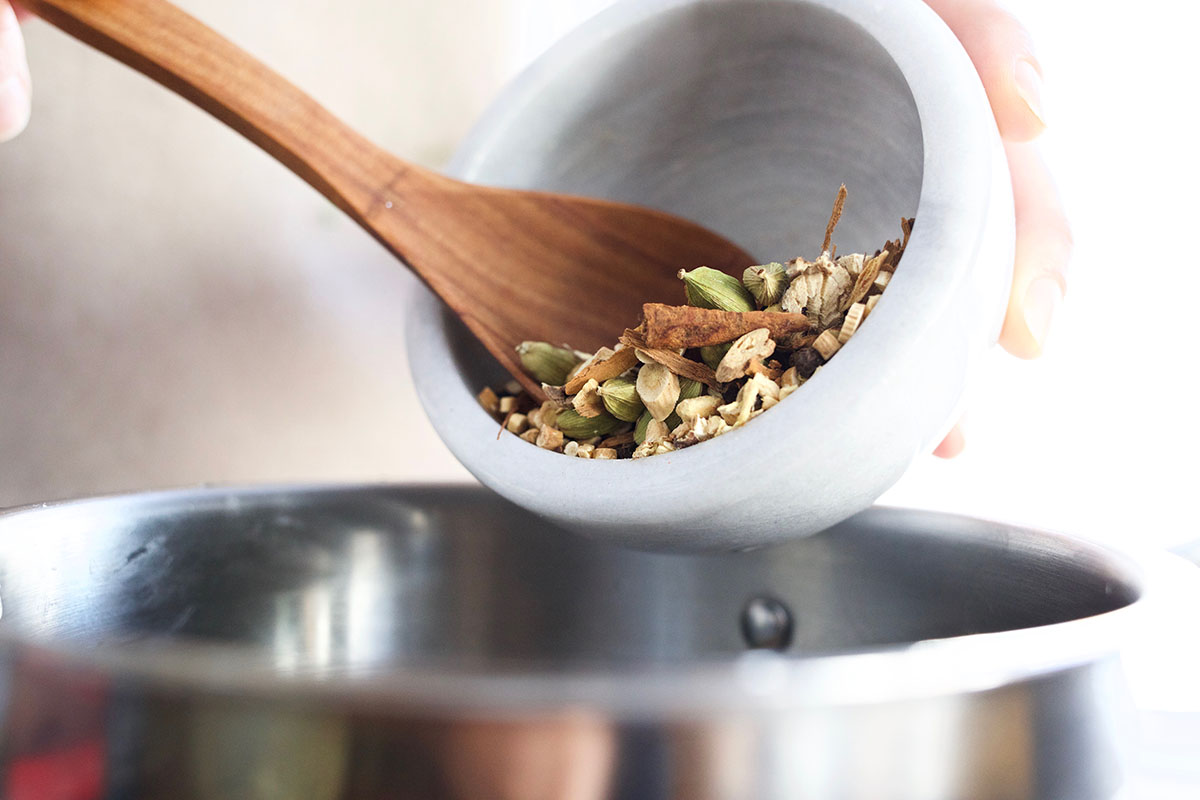
Welcome Adaptogens as a Daily Herbal Ally
The happy news is that it can be simple to enjoy adaptogens as part of your daily routine in the new year. These botanicals can certainly be taken in tincture and capsule form; however, they also make lovely decoctions, teas, electuaries, and other preparations for daily consumption.
One of the joys of herbalism is making delicious preparations to joyfully embrace the benefits of herbs. Adaptogens are no exception!

Use them in:
- Delicious electuaries and hand-rolled pills: https://theherbalacademy.com/rolled-herb-pills-video/
- Homemade herbal syrup: https://theherbalacademy.com/herbal-syrup/
- Nourishing herbal broths: https://theherbalacademy.com/diy-herbal-infused-broth
- Baking and snack preparation: https://theherbalacademy.com/herbal-infused-snacks-on-the-go/
- Adaptogenic bliss balls: https://theherbalacademy.com/adaptogen-bliss-balls/
Many adaptogens also blend seamlessly into chai. With its warming, digestion-promoting spices, chai tea is already a wonderful herbal preparation for wintertime. Here is a tasty recipe for you to try!
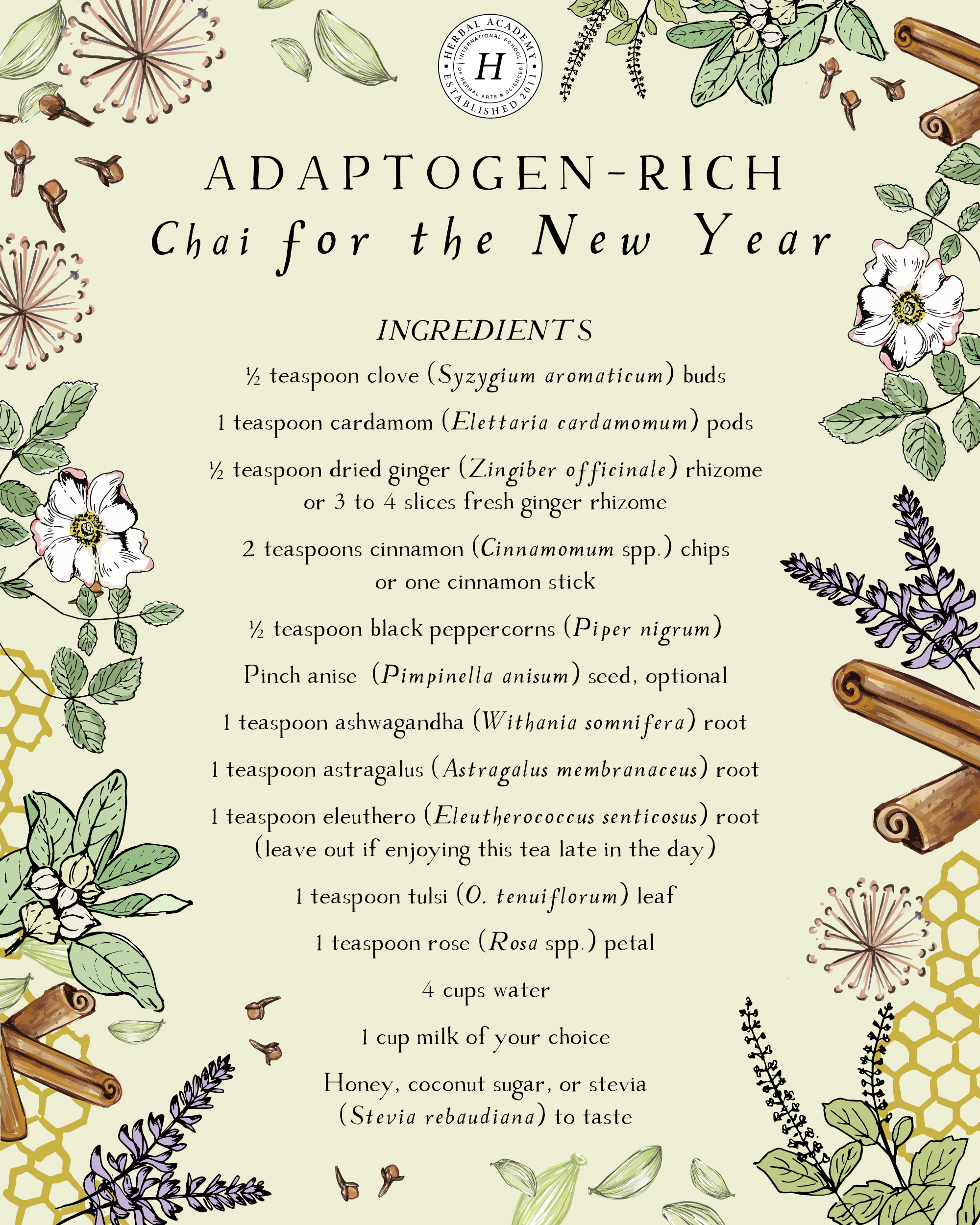
Adaptogen-Rich Chai for the New Year
Start the new year with herbs by decocting a batch of this tasty adaptogenic chai whenever you want to sip a warming, wellness-promoting brew! This recipe makes enough for two big cups of tea. Double or triple the batch size and keep leftovers refrigerated for up to 48 hours until ready to enjoy.
½ teaspoon clove (Syzygium aromaticum) buds
1 teaspoon cardamom (Elettaria cardamomum) pods
½ teaspoon dried ginger (Zingiber officinale) rhizome or 3 to 4 slices fresh ginger rhizome
2 teaspoons cinnamon (Cinnamomum spp. ) chips or one cinnamon stick
½ teaspoon black peppercorns (Piper nigrum)
Pinch anise (Pimpinella anisum) seed, optional
1 teaspoon ashwagandha (Withania somnifera) root
1 teaspoon astragalus (Astragalus membranaceus) root
1 teaspoon eleuthero (Eleutherococcus senticosus) root (leave out if enjoying this tea late in the day)
1 teaspoon tulsi (Ocimum tenuiflorum) leaf
1 teaspoon rose (Rosa spp.) petal
4 cups water
1 cup milk of your choice
Honey, coconut sugar, or stevia (Stevia rebaudiana) to taste
- If you have a mortar and pestle, you can crack/grind up the herbs a bit before placing in the pot. If not, just place the herbs in your pot, not to worry, you chai will still be tasty!
- In a 2-quart pot, combine the cloves, cardamom pods, ginger (if using dried), cinnamon (if using chips), peppercorns, anise seed, ashwagandha, astragalus, and eleuthero (if using).
- Add water to the pot with the herbs and bring to a simmer to start decocting your tea.
- Place a lid on top, bring to a simmer, and let decoct at a simmer for 20 to 30 minutes. Learn about making decoctions here.
- Remove the pot from heat and add the tulsi and rose petals. Cover and steep for an additional 10 to 15 minutes.
- Add the milk and sweetener.
- Heat until hot and ready to drink.
- Strain out the herbs and enjoy!

“The golden opportunity you are seeking is in yourself.” — Orison Marden
2020 is before us! With each new day and its moments unfolding, we are given an opportunity to nourish ourselves. Herbs can be part of that choice! We hope that you have found some inspiration here to help set you off on your new year’s path with herbs in tow.
Wishing you a beautiful and happy New Year!
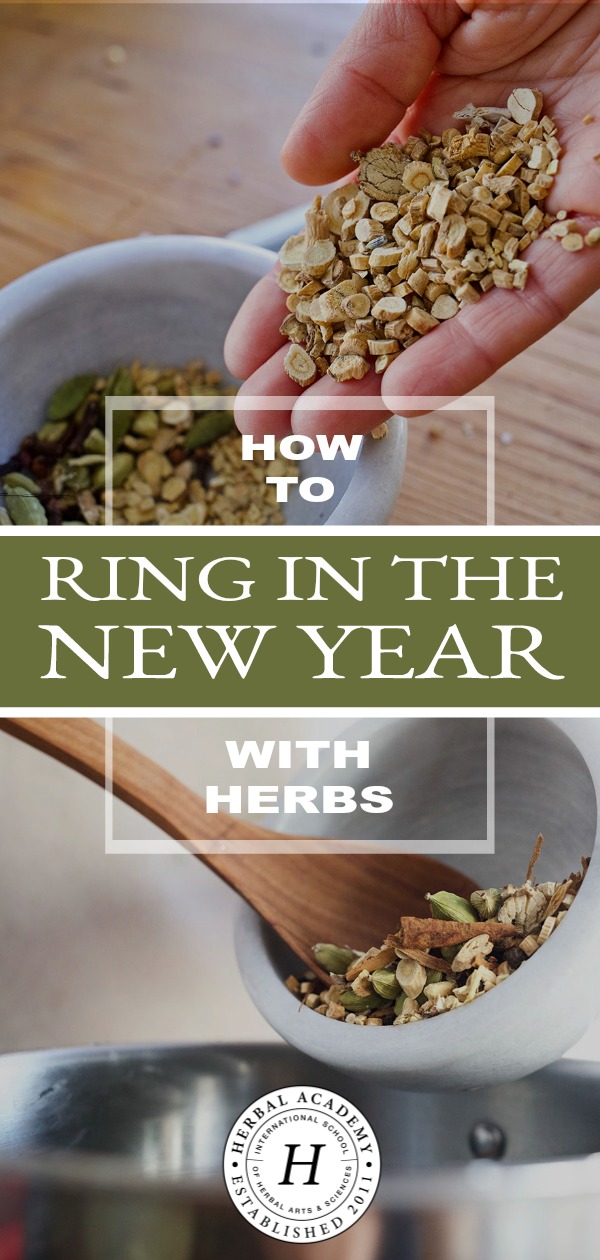
REFERENCES
Herbarium. (n.d.a.). Astragalus monograph. Retrieved from: https://herbarium.theherbalacademy.com/monographs/#/monograph/1025
Herbarium. (n.d.b.). Eleuthero monograph. Retrieved from: https://herbarium.theherbalacademy.com/monographs/#/monograph/2033
Herbarium. (n.d.c.). Holy basil monograph. Retrieved from: https://herbarium.theherbalacademy.com/monographs/#/monograph/3045
Metzger, J. (2016). Creating a local materia medica: Holy basil. Retrieved from: https://theherbalacademy.com/creating-local-materia-medica-holy-basil/
Romm, A. (2017). The adrenal thyroid revolution. New York, NY: Harper Collins.
Winston, D., & Maimes, S. (2007). Adaptogens: Herbs for strength, stamina, and stress relief. Rochester, VT: Healing Arts Press.
Yance, D.R. (2013). Adaptogens in medical herbalism. Rochester, VT: Healing Arts Press.

